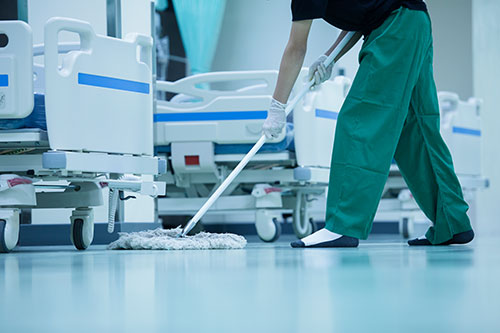What is Monkeypox?
The monkeypox (MPX) virus was first isolated from a macaque monkey in 1970. Monkeypox is a viral zoonosis, meaning that it can be transferred between humans and animals, with symptoms very similar to those found in smallpox patients[1]. In unvaccinated individuals, monkeypox can result in flu-like symptoms and rashes on the skin, with rare cases leading to fetal loss in pregnant women [2].
monkeypox causes swelling of the lymph nodes.
Signs and Symptoms:
Symptoms of monkeypox in humans are similar to smallpox but milder. Beginning with a headache, muscle ache and fatigue, the main difference is that monkeypox causes swelling of the lymph nodes. The time from infection to symptoms (incubation period) is normally 7-14 days, however, this can vary from 5-21 days.
Approximately 1-3 days after the fever, a rash develops, often beginning on the face, then spreading to other parts of the body. Lesions develop and progress through the following stages before falling off:
- Macules
- Papules
- Vesicles
- Pustules
- Scabs
The illness typically lasts from 2-4 weeks [3].
As of the latest communique at the time of writing, the WHO’s (World Health Organisation) latest figures suggest 92 confirmed cases and 28 suspected across 12 WHO member states. WHO is suggesting all potential cases be investigated, confirmed and isolated until lesions have crusted, scabs have fallen off and a new layer of skin has formed [4].
Avoid skin to skin or face to face contact with anyone who presents with symptoms
Prevention
Prevention of monkeypox can include avoiding skin to skin or face to face contact with anyone who presents with symptoms, practising safer sex, proper hand hygiene and cleaning procedures (soap and water or alcohol-based hand disinfectant) To help reduce the risk of transmission the CDC recommends that surfaces in rooms occupied by infected individuals are disinfected using a hospital-grade disinfectant. In addition, any portable equipment must be disinfected if it is removed from the patient room and linens, or bedding must be completely sanitized after use with cautions taken to protect employees handling laundry[5].
As you would expect with a virus that rarely causes outbreaks of infection in the US there are presently no disinfectants with a kill claim for monkeypox and no laboratories that could perform the testing needed to obtain EPA registrations. In response to the CDC declaration of an Epidemic, the EPA has activated the Emerging Viral Pathogen protocol for a large, enveloped virus (class 2a). Both Klorsept and Klorkleen 2 have the EPA emerging viral pathogen claim class 2a on the master label and as such our tablets are EPA registered as effective against the monkeypox virus. In dirty conditions, this would require a solution of 2153 ppm (minimum) for a contact time of 1 min.
Klorsept and Klorkleen 2 have the EPA emerging viral pathogen claim class 2a
“Klorsept & Klorkleen2 have demonstrated effectiveness against viruses similar to monkeypox on hard, non-porous surfaces. Therefore, both can be used against monkeypox when used in accordance with the directions for use against Norovirus on hard, non-porous surfaces.
Refer to the EPA website at https://www.epa.gov/pesticide-registration/emerging-viral-pathogen-guidance-and-status-antimicrobial-pesticides for additional information.


